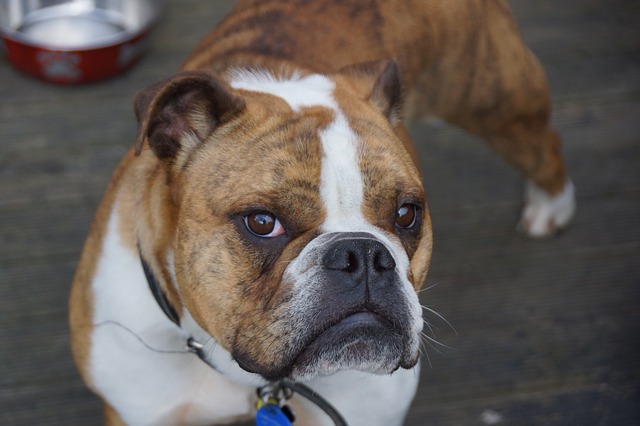
We all love dogs and know that their hearts are pure, but sadly, attacks still happen. At the end of the day, our loyal companions are still animals with instincts that need to be respected. If they feel scared, threatened, or defensive, any dog is capable of biting. What’s more, some pups are simply more likely to go for the “fight” instead of the “flight,” whether it’s from past experience or it’s just in their nature.
In light of a recent event where a dog attacked a passenger on a New York City subway, the subject of dog attacks — namely, how to prevent them, and what to do if one occurs — has been a hot topic of discussion. Would you know the signs of an impending dog attack, or what to do if it happened to you?

Prevention
Obviously, the best case scenario is to avoid an altercation in the first place, and there are signs that everyone, not just dog owners, should look out for.
First off, it’s our responsibility as pet parents to refrain from putting our pups in situations that make them nervous. You may want to take your companion everywhere you go, but if they startle easily or become anxious around other dogs or strangers, it’s best to keep them away from crowds — even if that means leaving them at home. You know your dog best, and it’s your job to determine whether a situation may be too overwhelming for them.
When you do take your pup out in public, keep a close eye on his or her body language. Even the calmest dog might get overwhelmed when they’re out and about. If they start to appear agitated, know when it’s time to take a break from the hustle and bustle.

Secondly, everyone should know (and should teach their children) that it’s important to never touch someone else’s dog without their permission. Even if you’re given the “okay” to pet a new pup, approach gently, slowly, and in a way that keeps you clearly visible (don’t startle them by coming up from behind).
Colleen Demling, a dog behaviorist from Dogtopia, shed some light on the topic in an article by PEOPLE. She describes the type of body language to look out for, explaining:
“Watch for a stiff body. Happy dogs are relaxed as they move. A dog that is agitated will have more jerky movement or no movement at all.”
She added that dogs who feel cornered or confined are also more likely to strike.
“Don’t approach a dog that is tied to something. When a dog is tied, they can feel more vulnerable. If they are approached by a stranger, they may try to bite. When entering a property, announce yourself and wait for someone to come let you in. Never walk into a house or yard without the owner. “
If you think your dog would go after another human or animal if they got loose, set up additional barriers, like a second gate in the front hallway or a self-closing door that locks, Demling says.

Stopping the attack
No matter how cautious or savvy you are about dog behavior, it’s still possible to find yourself in the middle of, or witnessing, a dog attack. As counterintuitive as it may seem, Demling explains that the best thing to do is to try to stay calm.
“Panicking can only exasperate the situation,” she says, adding that you should use anything you can to shield yourself, such as a purse, backpack, or briefcase. She continues:
“If you can reach a high surface, such as a tree trunk or the top of a car, that can also help. Do not turn your back on the dog, make eye contact or square off, as all of those things can escalate the attack.”

If it’s your dog doing the attacking, again, stay calm — yelling at them will only make the situation worse. One of the best ways to stop an attack or dog fight is to pick up the pooch by the hind legs, holding them in the air. This is known as the wheelbarrow method, and not only switches your dog’s focus, it protects you from getting bitten by staying away from their face.
Demling also suggests that if there happens to be a hose nearby, spraying the dog might be enough to distract them and loosen their grip. Once the altercation has been diffused, take the dog out of the situation immediately.
For more advice, check out 6 Methods For Safely Breaking Up A Dog Fight.
Have you ever stopped a dog attack? Tell us what worked — and what didn’t — in the comments below.
(h/t: PEOPLE)
via Whisker Therapy